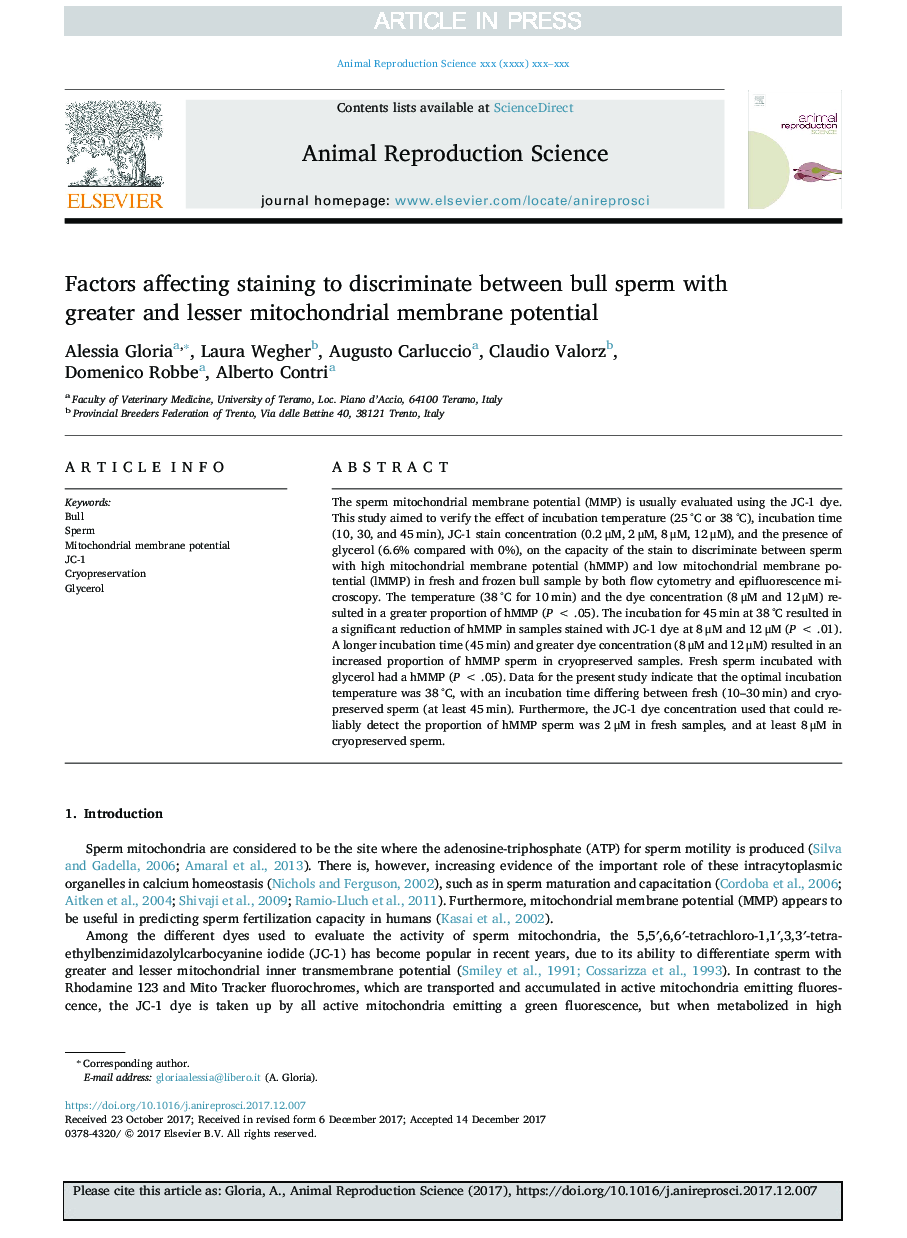| Article ID | Journal | Published Year | Pages | File Type |
|---|---|---|---|---|
| 8404027 | Animal Reproduction Science | 2018 | 9 Pages |
Abstract
The sperm mitochondrial membrane potential (MMP) is usually evaluated using the JC-1 dye. This study aimed to verify the effect of incubation temperature (25â¯Â°C or 38â¯Â°C), incubation time (10, 30, and 45â¯min), JC-1 stain concentration (0.2â¯Î¼M, 2â¯Î¼M, 8â¯Î¼M, 12â¯Î¼M), and the presence of glycerol (6.6% compared with 0%), on the capacity of the stain to discriminate between sperm with high mitochondrial membrane potential (hMMP) and low mitochondrial membrane potential (lMMP) in fresh and frozen bull sample by both flow cytometry and epifluorescence microscopy. The temperature (38â¯Â°C for 10â¯min) and the dye concentration (8â¯Î¼M and 12â¯Î¼M) resulted in a greater proportion of hMMP (Pâ¯<â¯.05). The incubation for 45â¯min at 38â¯Â°C resulted in a significant reduction of hMMP in samples stained with JC-1 dye at 8â¯Î¼M and 12â¯Î¼M (Pâ¯<â¯.01). A longer incubation time (45â¯min) and greater dye concentration (8â¯Î¼M and 12â¯Î¼M) resulted in an increased proportion of hMMP sperm in cryopreserved samples. Fresh sperm incubated with glycerol had a hMMP (Pâ¯<â¯.05). Data for the present study indicate that the optimal incubation temperature was 38â¯Â°C, with an incubation time differing between fresh (10-30â¯min) and cryopreserved sperm (at least 45â¯min). Furthermore, the JC-1 dye concentration used that could reliably detect the proportion of hMMP sperm was 2â¯Î¼M in fresh samples, and at least 8â¯Î¼M in cryopreserved sperm.
Related Topics
Life Sciences
Agricultural and Biological Sciences
Animal Science and Zoology
Authors
Alessia Gloria, Laura Wegher, Augusto Carluccio, Claudio Valorz, Domenico Robbe, Alberto Contri,
